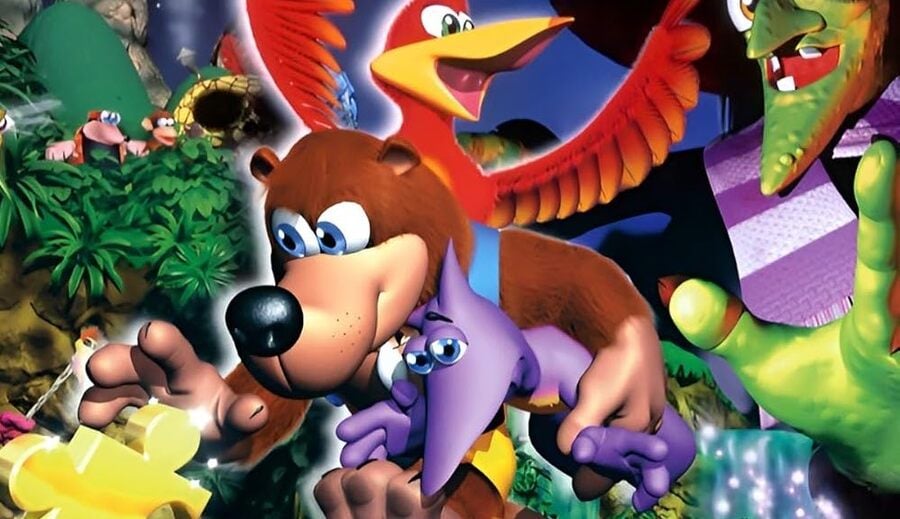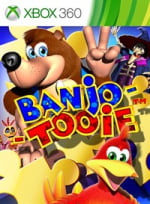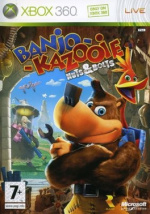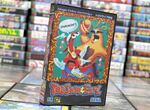
Around 2007, 4Kids Entertainment started work on a Banjo Kazooie TV show, working alongside Microsoft and Rare to try and bring the classic N64 game into a brand new medium, following their successful collaboration on the Viva Piñata TV show.
The existence of this show was first revealed almost a decade ago, when Emilio Lopez, a former storyboard artist, character designer, and animator at 4Kids Entertainment posted several designs for the show on Twitter/X. Recently, however, we decided to reach out to Lopez to see if we uncover more about what happened, with Lopez kindly offering some additional insight into the direction this show might have potentially taken, and the reason why it never ended up happening.
Lopez first got involved with the project, as he was an in-house artist at 4Kids Productions, having gotten the job after being a freelancer on 4Kids TMNT animated TV show.
"I was on the project Banjo from the very start," he told us. "I originally worked on TMNT 2003 and was supposed to be let go after production wrapped because our time as freelancers had lapsed, but we had a versatile team on TMNT 2003 and the studio found that it was better to keep our little team together to help develop other possible shows to keep the lights on.
"[Around the time I was hired in 2006] 4Kids had lost the rights to localize the Pokémon franchise because of mismanagement by '4Kids Entertainment', our parent company," Lopez said. "The loss of the Pokémon franchise left a huge hole and so began an initiative to develop new shows. The Viva Piñata TV show, Chaotic, Banjo Kazooie, and "Project Pikapods" were the results of this initiative."
He continued, "Anyway, 4Kids Entertainment was looking to develop more shows because they had a good relationship with Microsoft / Rare from working on the Viva Piñata TV show and they were looking to develop more Rare properties. Some of the ones tossed around were “Sabre Wulf” (not the Killer Instinct version), Battletoads and Banjo. But since Banjo had a game coming out soon — Banjo Kazooie: Nuts and Bolts — it was chosen as the one to develop. The idea was to have it ready to coincide with the release of the game or at least close to it."
One thing, in particular, we were wondering about the pitch for the show was how it would fit into the continuity of the series. Would it go back and try to retell the story of Banjo Kazooie or attempt to tie in more closely with Nuts and Bolts? As Lopez states, it was more the former.
"In general this was a pitch that was going to be somewhat of a retelling," he told us. "But also with new elements like a new adventure. Coming in on the idea that this is people's first exposure to Banjo if they hadn't played the games at all .Sort of like how Viva Piñata the series doesn't fully reflect the games but it does have elements from them. That's why the designs I submitted took into account some familiar elements from the original games."
Speaking about these designs for the characters, Lopez said that the team were free to pitch ideas that weren't related to the more cuboid-esque art-style that was being used on Banjo Kazooie: Nuts and Bolts.
"In general Microsoft and Rare were very open to interpretation," he said. "We didn't need to stick with the Nuts & Bolts designs. So we tossed a bunch of things at them to see what clicked. Our whole team submitted designs. They would say 'Oh hey, we like this back pack design but not the shape of the character. Can you mix it with another design until we end off on a final design?' It was a very collaborative process but it involved a whole lot of revisions and changes.'
"At least in my opinion, we tried to give the designs elements that people might remember from the old games but also give them something new. Sort of like Nintendo's handling of the redesign of Donkey Kong you see for Donkey Kong: Bananza. The changes are subtle but it combines elements from the original design and the Rare iteration and new elements."
Speaking about his own interpretations on the characters (pictured above), Lopez stated that he had a few different influences that help shaped his personal approach to the character, These include Uncharted's Nathan Drake (who he felt would give the character a more adventurous edge), Kingdom Hearts, and "anime in general". He describe the show's version of the character as "A Banjo with adventurous accessories", stating "That was one of the notes to really push more accessories that are adventurous and modern."
As stated, he wasn't the only one to submit potential character designs, however, with an illustrator named Adrian Barrios submitting another design, which seemed to be a bit more cartoony and expressive. The artist Keith Conroy, meanwhile, submitted what became the final design, which ultimately feels the most kid-friendly out of all the versions we've seen.
Once the team had a finished design, the hope was that the project would officially be greenlit and work would begin on the project in earnest, but according to Lopez, everything just stopped, with communication simply petering off.
"The higher ups did their pitch and it all just stopped," said Lopez. "I remember asking after not hearing anything and they would say they heard nothing back. To be honest, this is pretty common in the entertainment and games industry. You rarely hear, 'Oh hey, this is not what we are looking for.' It just stops and is never given a reason. For whatever reason Microsoft did not see this as something that they wanted to invest in.
"I would say maybe contact someone from Microsoft or Rare but with the way they seem to go through employees these days I don't imagine any of the people who were there at the time are even still employed there."
Curious to know if any more of the project had been saved than what was already available made online, we asked Lopez if he still had any other materials, to which he responded, "In general we were in the pitch phase. So that meant designs for Banjo and Kazooie and a pitch document. I kept some of the art that was done from the project and I may have iterations. But I mostly just kept the designs I dug and I tossed the pitch document at the time. I had a tiny desk back then and couldn't fit much on it. Also, I felt a little dejected. We put a lot of work into that project just to not hear anything back. Such is the industry, as they say."
As for 4Kids, it ended up going through some turbulent times not long after. Lopez told us, "In 2009, the whole 4Kids Productions / TMNT 2003 art team was let go in one fell swoop not long after The TMNT franchise was sold to Viacom/Paramount.
"Later 4 Kids Entertainment was sued by Konami and filed for bankruptcy. This was because they attempted to pull the same tactics that caused them to lose the Pokémon franchise with the Yu-Gi-Oh franchise.
"The bright side is that my studio 4Kids Productions was saved and later acquired by Konami and renamed. Funnily enough, I ended up working back at the same studio 10 years later with a lot of the same people I worked with on Banjo and TMNT 2003 on games like Contra."








